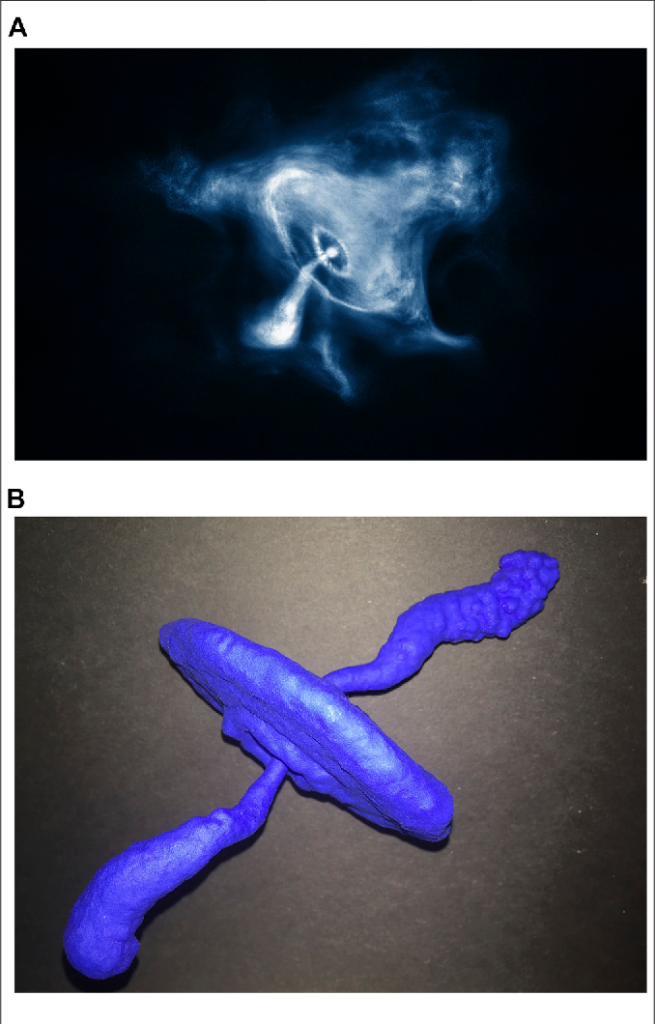3D Astrophysics Newsletter 2020.10
Kimberly K. Arcand, Sara R. Price, Megan Watzke

Abstract
Three-dimensional (3D) visualization has opened up a universe of possible scientific data representations. 3D printing has the potential to make seemingly abstract and esoteric data sets accessible, particularly through the lens of translating data into forms that can be explored in the tactile modality for people who are blind or visually impaired. This article will briefly review 3D modeling in astrophysics, astronomy, and planetary science, before discussing 3D printed astrophysical and planetary geophysical data sets and their current and potential applications with non-expert audiences. The article will also explore the prospective pipeline and benefits of other 3D data outputs in accessible scientific research and communications, including extended reality and data sonification.
Keywords: 3D printing, 3D visualization, virtual reality, astrophysics, geophysics,
science communication, inclusivity
Journal: Frontiers in Earth Science, 2020, DOI: 10.3389/feart.2020.590295
Arxiv: https://arxiv.org/ftp/arxiv/papers/2012/2012.02789.pdf
Submitted by: Sara Price
The 3D Astrophysics Newsletter is a free service by ilumbra.com.
